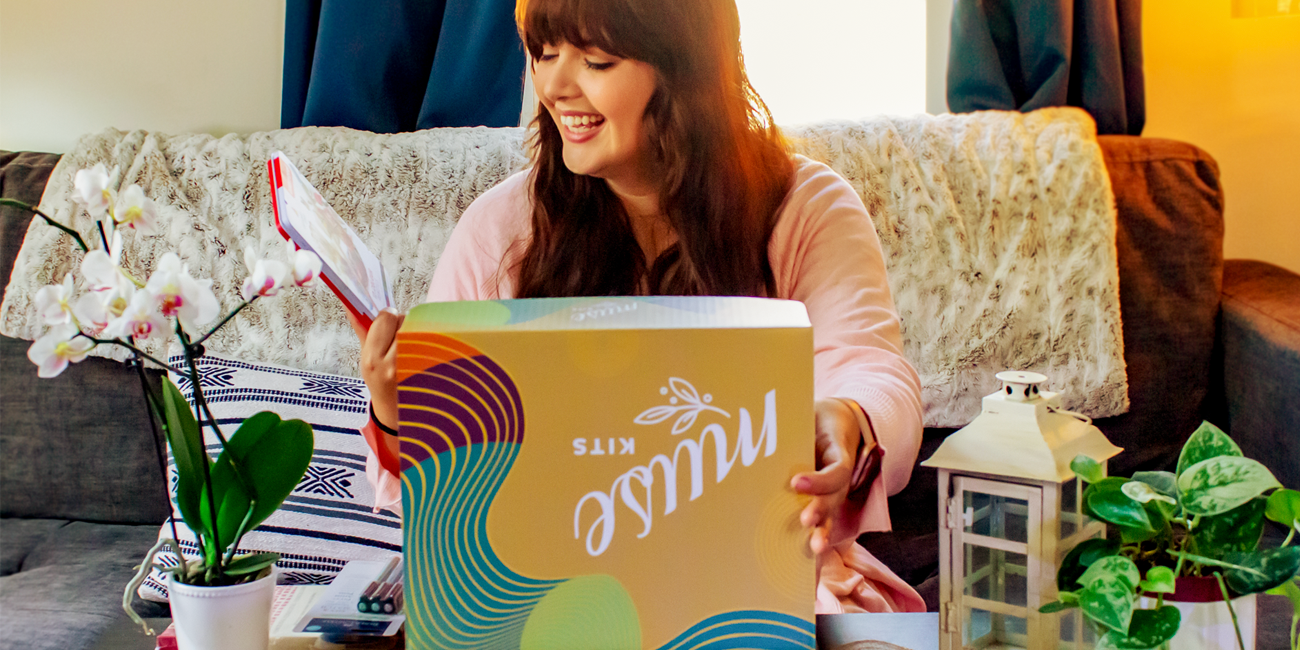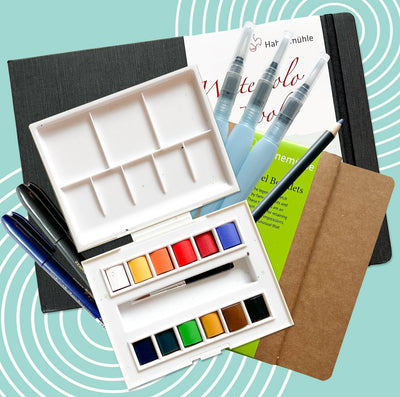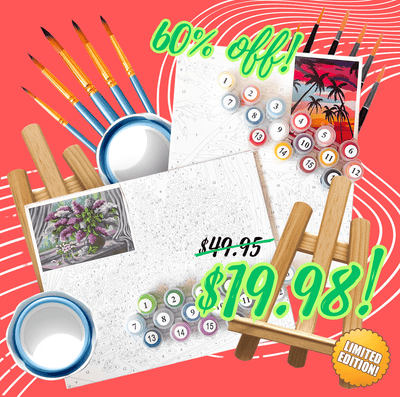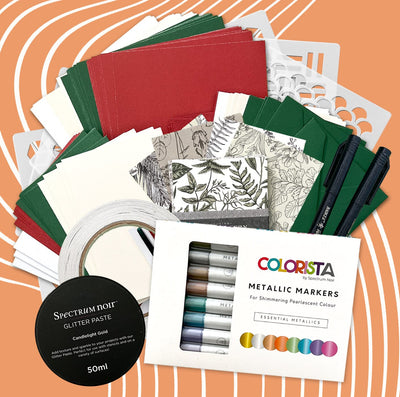Hello Muse Kits Friends!
Homeschooling offers an unparalleled opportunity for parents to tailor their children's education to their unique interests and needs. Among the many subjects that can be explored, art stands out as a crucial component for fostering creativity, critical thinking, and emotional expression. With over a decade of experience crafting art kits, we have witnessed firsthand the transformative power of integrating art into education. In this comprehensive guide, we’ll explore how to effectively plan and execute art lessons for homeschoolers, leveraging the unique advantages offered by Muse Kits.
Here are a few essential tips to expand your
Homeschool Art Curriculum!
The Importance of a homeschool art curriculum
Art is not merely an extracurricular activity; it is a vital element of a well-rounded education. It helps develop fine motor skills, enhances cognitive abilities, and provides a medium for emotional expression. For homeschoolers, art can serve as a break from traditional academics and offer a different way to process and understand the world.
Benefits of a Homeschool Art Curriculum
1. Cognitive Development: Engaging in art stimulates different parts of the brain, encouraging problem-solving and innovative thinking.
2. Emotional Expression: Art allows children to express their feelings and ideas in a non-verbal way, which can be particularly beneficial for those who struggle with communication.
3. Motor Skills: Activities like drawing, painting, and sculpting improve fine motor skills and hand-eye coordination.
4. Cultural Awareness: Studying various art forms introduces children to different cultures and historical periods, broadening their understanding of the world.
Planning Art Lessons for Homeschoolers
Creating a structured homeschool art curriculum for your homeschool can be both exciting and challenging. The goal is to strike a balance between guided instruction and creative freedom, ensuring that students learn essential skills while also having the liberty to explore and innovate.
Structuring Your Homeschool Art Curriculum
1. Define Learning Objectives: Establish what you want your students to achieve by the end of each lesson or unit. Objectives might include mastering specific techniques, understanding art history, or creating a portfolio of work.
2. Select a Variety of Mediums: Introduce students to different artistic mediums such as painting, drawing, sculpture, and digital art. This diversity keeps lessons engaging and helps students discover their preferred forms of expression.
3. Incorporate Art History: Include lessons on famous artists and art movements. This not only provides context but also inspires students by showing them the possibilities of art.
4. Plan Hands-On Projects: Practical projects are the cornerstone of any art curriculum. Ensure that each project allows students to apply the techniques they've learned and encourages creative experimentation.
Integrating Muse Kits into Your Homeschool Art Curriculum
Muse Kits are an excellent resource for planning art lessons for homeschoolers. These kits come equipped with all the supplies needed to complete several projects, along with step-by-step guides and project inspiration. Whether you opt for a monthly subscription or purchase individual kits, Muse Kits can seamlessly fit into your homeschool art curriculum.
Advantages of Using Muse Kits in Your Homeschool Art Curriculum
1. New Mediums and Techniques: Each kit introduces students to different artistic mediums and techniques, ensuring a comprehensive learning experience.
2. All-Inclusive Supplies: Muse Kits come with all necessary supplies, saving you the hassle of sourcing materials separately.
3. Step-by-Step Guides: Detailed instructions make it easy for parents to guide their children through each project, even if they have limited art experience themselves.
4. Project Inspiration: Each kit includes ideas and examples to spark creativity and help students get started on their projects.
Sample Art Lessons a Homeschool Art Curriculum Using Muse Kits
Here are a few sample lessons across different age groups and skill levels to illustrate how Muse Kits can be integrated into your homeschool art curriculum.
Lesson 1: Exploring Watercolors (Ages 8-10)
Objective: Introduce students to basic watercolor techniques and color mixing.
Materials: Muse Kit - Watercolor Studies
1. Warm-Up: Begin with a brief discussion about watercolors and famous watercolor artists. Show examples of different styles and techniques.
2. Technique Practice: Use the step-by-step guide to practice basic techniques such as wet-on-wet, wet-on-dry, and color blending.
3. Project: Create a simple landscape painting using the techniques learned. Encourage students to experiment with colors and brush strokes.
Reflection: Discuss what they enjoyed about working with watercolors and any challenges they faced.
Lesson 2: Mixed Media (Ages 10-12)
Objective: Teach students about mixed media art and the concept of layering materials to create texture and depth.
Materials: Muse Kit - Glass Painting
1. Introduction: Explain mixed media art and show examples from various artists.
2. Exploration: Use the supplies in the kit to explore painting on different surfaces.
3. Project: Create a glass painting project based on a chosen theme (e.g., nature, emotions, dreams). Guide students through layering techniques and encourage them to incorporate personal items or drawings.
Reflection: Have students present their glass paintings and explain the choices they made in their artwork.
Lesson 3: Linoleum Block Printing (Ages 13-16)
Objective: Introduce students to the process of linoleum block printing, focusing on design, carving, and printmaking techniques.
Materials: Muse Kit - Linoleum Printmaking Essentials
1. Warm-Up: Discuss the history of printmaking and explore different materials and methods used by famous printmakers throughout history.
2. Technique Practice: Use the step-by-step guide to learn basic printmaking techniques, including designing, transferring designs to linoleum blocks, carving techniques, and inking.
3. Project: Create a linoleum print inspired by a literary theme or personal story. Encourage students to brainstorm and sketch their designs on paper before transferring them to the linoleum block.
Reflection: Discuss the challenges and rewards of printmaking. Consider how carving and printing from a linoleum block requires a different set of skills compared to other art forms and the unique outcomes of working with ink and prints.
Lesson 4: Pastels and Charcoal Drawing (Ages 15-18)
Objective: Introduce students to the expressive potential of pastels and charcoal, focusing on drawing techniques, shading, and blending.
Materials: Muse Kit - Pastels and Charcoal Essentials
1. Introduction: Explain the history and characteristics of both pastels and charcoal as artistic mediums. Discuss their role in both traditional and contemporary art.
2. Exploration: Use the tools provided in the kit to practice basic drawing techniques, such as sketching, shading, and blending with both pastels and charcoal.
3. Project: Create a detailed portrait or landscape using pastels and charcoal. Encourage students to experiment with layering colors and textures to achieve depth and emotion in their artwork.
Reflection: Have students present their artwork and discuss their process and choices. Reflect on the different effects achieved with pastels versus charcoal and how these materials can convey different moods and stylistic qualities.
Lesson 5: Sumi-e Style Painting with Watercolor Inks (Ages 13-16)
Objective: Introduce students to the traditional Japanese art of Sumi-e, teaching them the fundamental techniques of using watercolor inks to create expressive, minimalist compositions.
Materials: Muse Kit - Sumi-e Essentials
1. Introduction: Discuss the origins and philosophy behind Sumi-e painting, emphasizing its roots in Zen Buddhism and the importance of simplicity, concentration, and the harmony of nature.
2. Technique Practice: Demonstrate how to handle the Sumi-e brush and the proper way to mix and apply watercolor inks. Practice the "Four Treasures": the brush, ink, inkstone, and paper, focusing on brush strokes that reflect the spirit rather than the form of the subject.
3. Project: Create a Sumi-e painting focusing on traditional subjects like bamboo, orchids, plum blossoms, or koi fish. Encourage students to express the essence of the subject with minimal strokes, capturing both form and spirit concisely.
Reflection: Have students share their paintings and discuss the thought process behind their brushwork. Reflect on the challenges of working with watercolor inks and the artistic discipline required to simplify an image to its essence.
Encouraging Artistic Growth and Exploration
One of the most rewarding aspects of a homeschool art curriculum is witnessing their growth and development as artists. Here are a few tips to foster a supportive and inspiring environment:
1. Celebrate Creativity: Encourage students to take risks and experiment with different styles and mediums. Celebrate their unique artistic voices and individual progress.
2. Provide Constructive Feedback: Offer positive and constructive feedback that focuses on specific aspects of their work. Highlight their strengths and gently guide them in areas where they can improve.
3. Create a Dedicated Art Space: Having a dedicated space for art activities can help students focus and feel more invested in their work. Ensure the space is well-lit and stocked with necessary supplies.
4. Incorporate Cross-Disciplinary Learning: Connect art lessons with other subjects such as history, science, and literature. For example, create art projects inspired by historical events or scientific concepts.
5. Document Progres: Keep a portfolio of your students' artwork. This will showcase their progress and provide a sense of accomplishment and pride.
Integrating art lessons into your homeschool art curriculum is a journey of discovery, creativity, and growth. With resources like Muse Kits, planning and executing these lessons becomes an engaging and enriching experience for both parents and students. By exploring a variety of mediums, techniques, and projects, you can unlock your child's creative potential and foster a lifelong appreciation for the arts.
Muse Kits, with their comprehensive supplies and detailed guides, are a perfect companion in this educational journey. Whether you choose a monthly subscription or select individual kits, these kits provide everything needed to inspire and educate your young artists.
Remember, the goal of art education is not just to produce skilled artists but to nurture creative thinkers and confident individuals. Embrace the process, celebrate the creativity, and enjoy the beautiful journey of art education in your homeschooling adventure.












